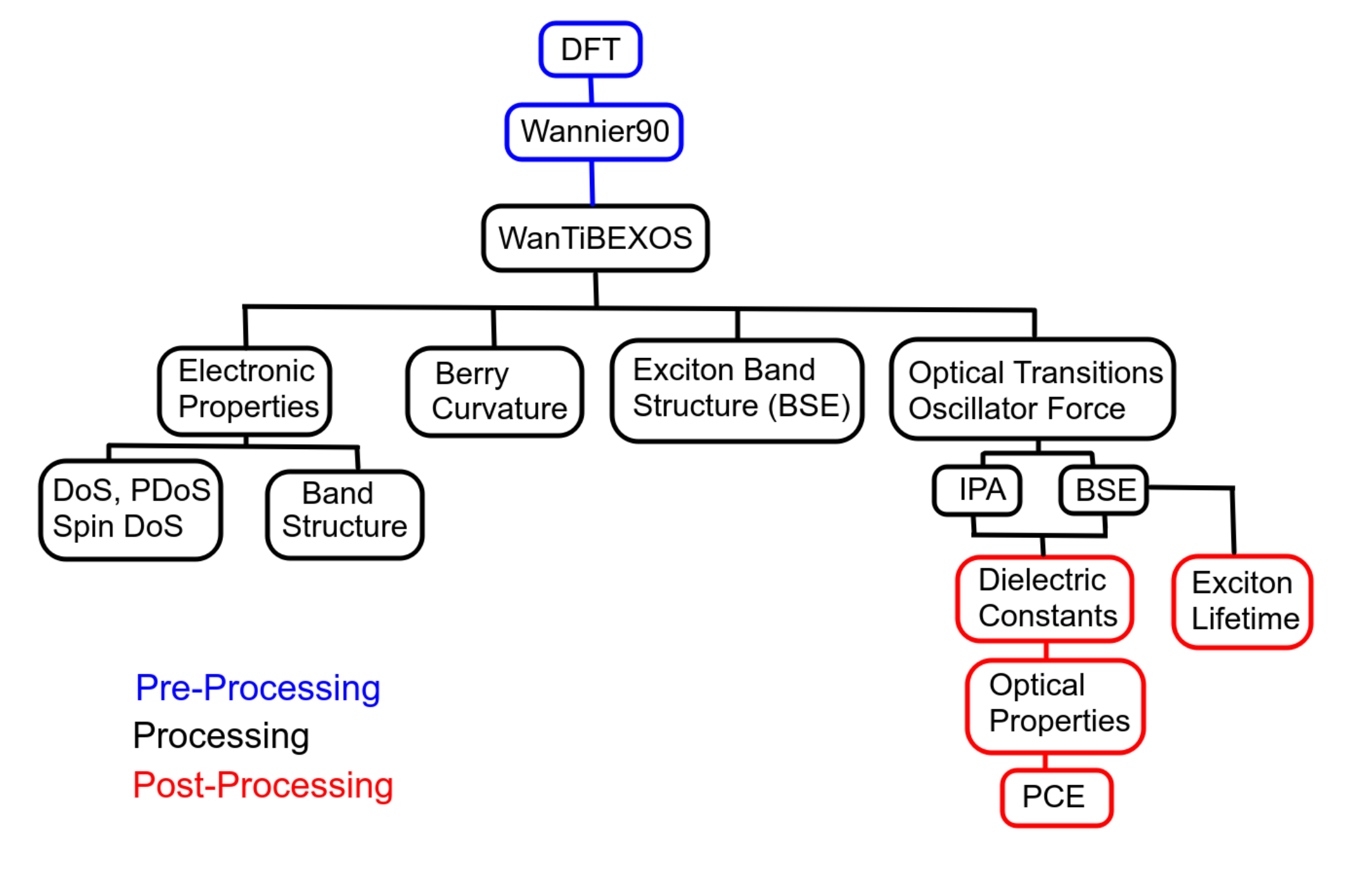Welcome to WanTiBEXOS’s documentation!
Looking for a computational tool to study the electronic band structures, optical properties, and topological characteristics of 0D, 1D, 2D, and 3D materials? Look no further than WanTiBEXOS code! Written in Fortran90 and parallelized with OpenMP, this tool was developed using the Tight-Binding Hamiltonian created by Wannier90 code and boasts various features. So if you’re interested in studying excitonic phenomena and more, give WanTiBEXOS a try.

Important
The basics of WanTiBEXOS consist of the following stages:
Pre-processing, which involves performing DFT and Wannier90 calculations to generate MLWF-TB parameters.
Processing, in which WanTiBEXOS simulations are run.
Post-processing, during which various physical properties are calculated based on data generated in the first two stages.
This documentation shows how to apply the WanTiBEXOS functions to perform electronic and optical properties simulations for any periodic material. Here’s a list of what WanTiBEXOS can do for you:
Band structure
DoS, Spin-DoS and Projected DoS
Berry Curvature (non-metallic systems only)
Several options of Coulomb potentials designed for 3D, 2D, and 0D systems
BSE solver using TDA approximation
Exciton band structure
Exciton wavefunctions
Exciton Radiative lifetimes
Dielectric function and optical properties, with and without excitonic effects.
Installation & Inputs
Formalism
Development
This document was generated Nov 02, 2023.